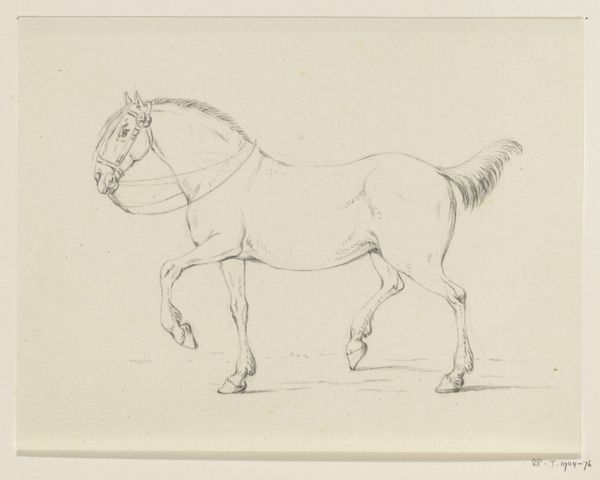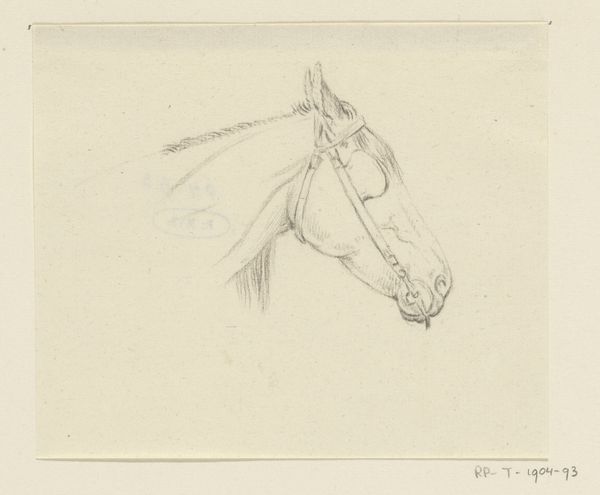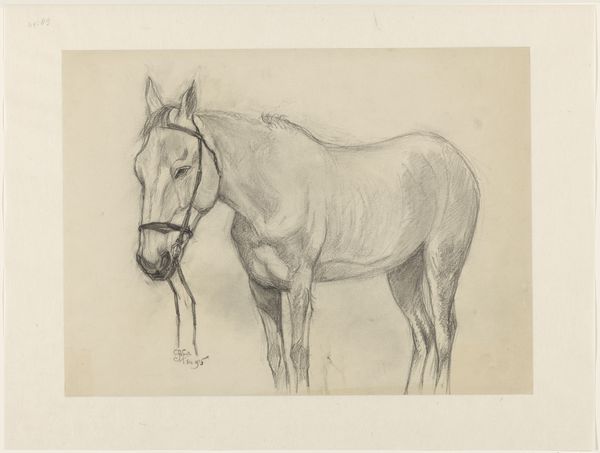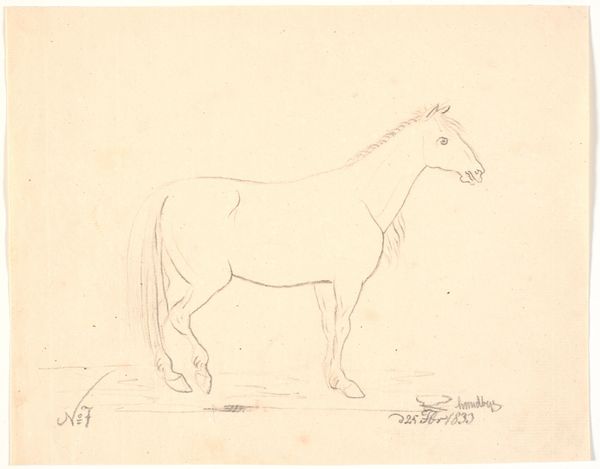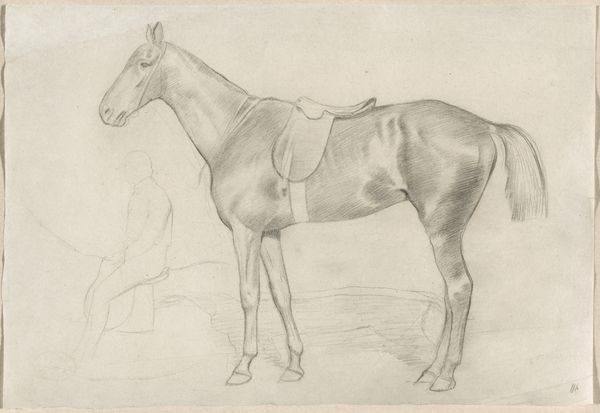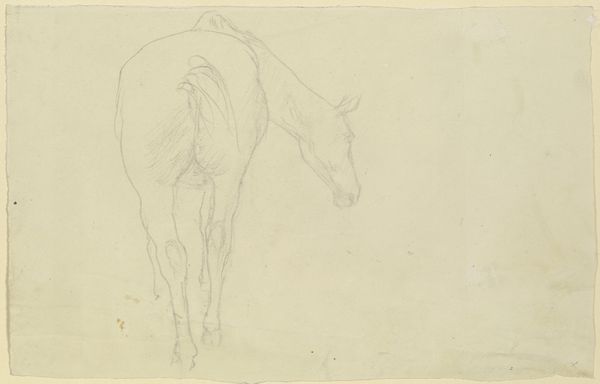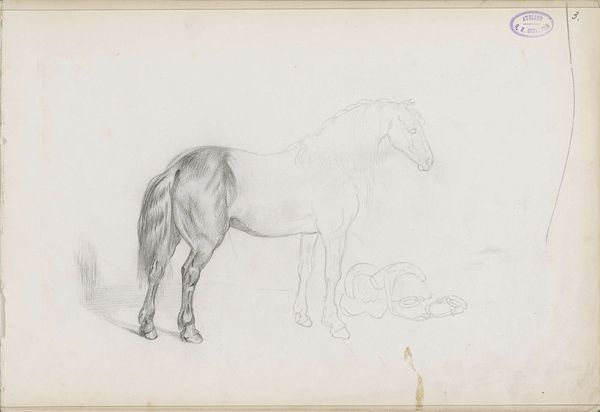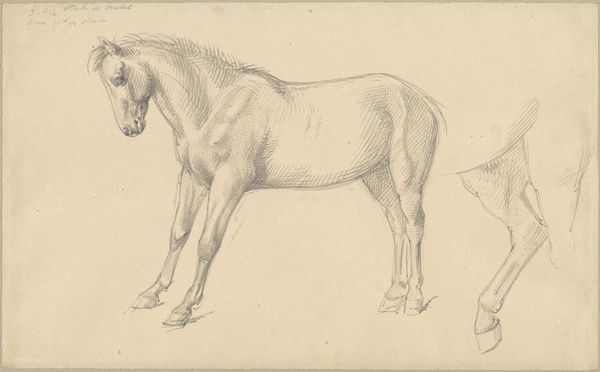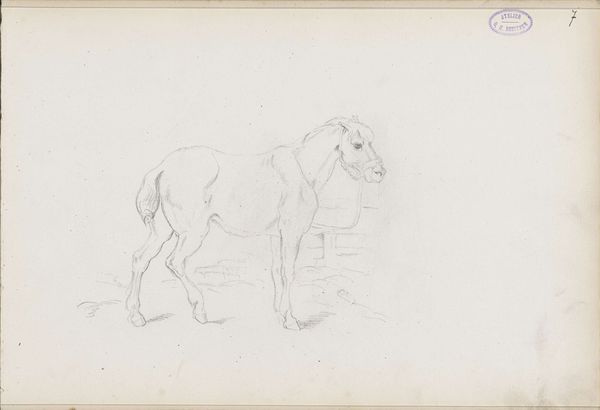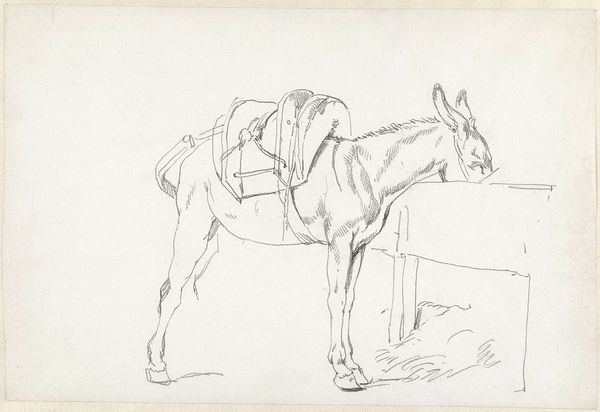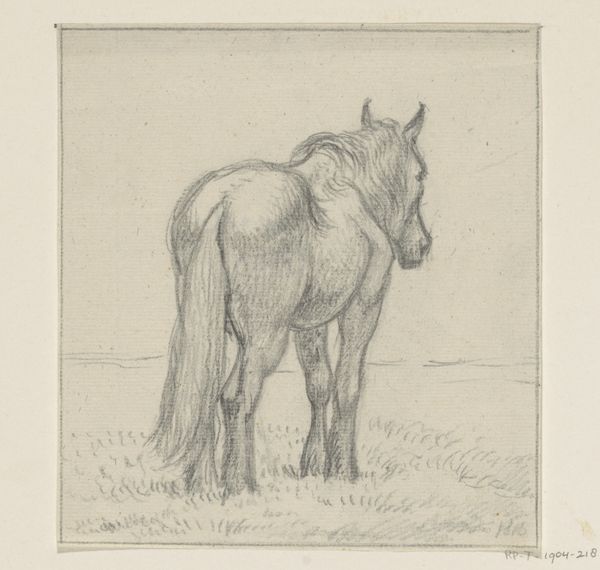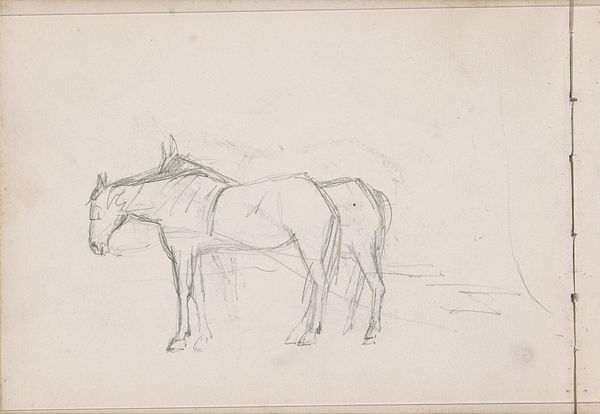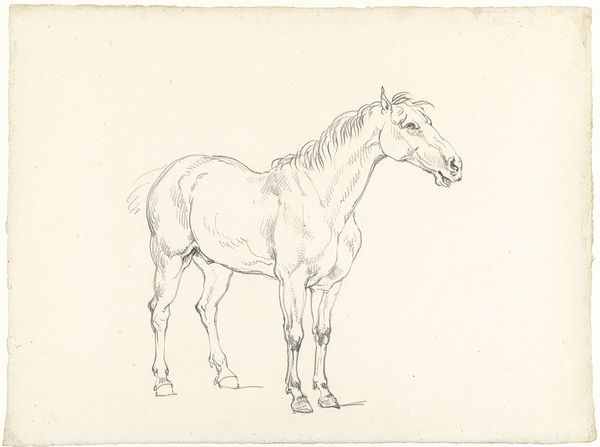
drawing, pencil
#
drawing
#
ink drawing
#
pencil sketch
#
landscape
#
figuration
#
pencil
Dimensions: 122 mm (height) x 154 mm (width) (bladmaal)
Curator: Let's consider "To heste," or "Two Horses," an 1881 pencil drawing by Agnes Lunn. The simplicity and bareness of it strikes me. What do you notice? Editor: It does feel very stripped back. I’m immediately drawn to the delicate lines and the way Lunn has captured the musculature of the horses, even with such minimal detail. How would you interpret her technique here? Curator: It seems Lunn is prioritizing an exploration of form through line. Consider how the variations in line weight—thick to thin, dark to light— delineate mass and spatial relationships. The pencil itself is key; its inherent capacity for nuanced tonal gradation defines the drawing's very structure. Editor: So, you see the material itself – the pencil, the paper – as being central to the work's meaning? Curator: Precisely. We aren’t necessarily seeing a photorealistic rendering of horses but rather an investigation into the possibilities of drawing itself. What do you think that sketchy quality communicates? Editor: I think it creates a sense of immediacy and intimacy. Like we're seeing the artist's initial observation, unfiltered. Almost like an unmediated expression of an idea. Curator: Exactly. This piece isn't attempting to mimic reality but is instead a direct transcription of the artist's process of seeing and recording. That process, made so tangible through the sketch, is the work itself. Editor: I see what you mean. I had never considered how much the actual technique could mean! I’ll be thinking about this differently from now on. Curator: Likewise, your perspective on the immediate feel it has caused me to value that spontaneity more. It adds layers to the more technical aspects of my evaluation of the artwork.
Comments
No comments
Be the first to comment and join the conversation on the ultimate creative platform.
